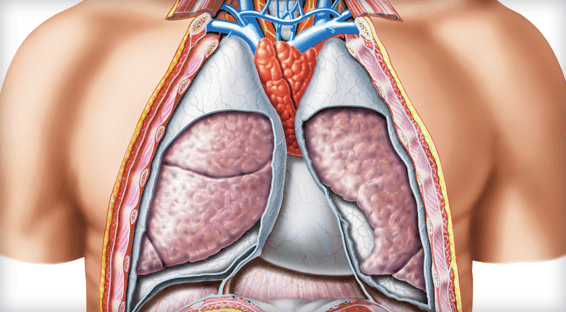Predicting Air Leaks After Pulmonary Resection
Better identification of patients at risk for prolonged air leak (PAL) after lung resection could help improve patient-specific intra- and postoperative care pathways. However, widely accepted risk stratification tools for PAL have yet to be developed. University of Pittsburgh researchers analyzed data on patients who underwent lung resection for benign or malignant lung tumors in order to identify factors associated with PAL and subsequently developed a clinically acceptable prediction model that can reliably assess PAL risk. The final model identified the following as risk factors for PAL: decreased FEV1, prior smoking, bilobectomy (versus lobectomy/segementectomy), high surgeon case load, prior lung surgery, right-sided resection, and thoracotomy. Low surgeon case load, wedge resection, patient BMI of less than 25 kg/m2, and unmeasured FEV1 were protective against PAL.
—————————————————————-
Assessing Post-Esophagectomy Readmissions
Identifying predictors of hospital readmissions may help improve patient management and outcomes. However, potentially modifiable risk factors of readmission after esophagectomy have not been well defined in clinical research. For a study, patients who underwent elective esophagectomy were contacted to ascertain if they had been admitted to any institution within 30 days of hospital discharge. The rate of 30-day readmission was 19%, mostly due to pulmonary and gastrointestinal complications. Postoperative ICU admission and perioperative blood transfusion were significantly associated with unplanned readmission. Increased glucose levels on Postoperative Day 1 was also associated with unplanned readmission, whereas American Society of Anesthesiologists score, gender, BMI, neoadjuvant therapy, and postoperative pain scores were not.
—————————————————————-
Comparing Lobectomy Pain Outcomes
The advantages of robot-assisted thoracic surgical (RATS) lobectomy have not been well defined in prior research. Data are also lacking on the effect of RATS on pain as compared with that of video-assisted thoracic (VATS) or open lobectomy. For a study, researchers reviewed data on patients who underwent RATS, VATS, or open lobectomy to identify factors associated with acute and chronic pain. While no significant differences were observed in acute or chronic pain between RATS and VATS lobectomy, patients who underwent either procedure had significantly lower acute pain at Postoperative Day 4 when compared with those who underwent open lobectomy. The incidence of chronic pain was significantly higher after open lobectomy.
—————————————————————-
A Novel Approach to Identifying Air Leaks
Previous studies have shown that air leaks are a significant cause of morbidity and mortality after thoracic surgery. However, identifying all leaks requires the imprecise and archaic process of submerging an inflated lung and looking for bubbles. University of Maryland researchers suspended ex vivo sheep lungs in an apparatus that simulated a patient with an air leak and a chest tube on -20 cm suction. They aerosolized methylene blue to a specific particle size, introduced it into the inspired air until it flowed from the leak, and then dissected the lungs to assess the extent of lung staining. All leaks were identified in a short time—often in seconds—with the dye, including leaks that were previously undetected.
—————————————————————-
Predicting Post-Lung Resection Readmissions
Few studies have assessed perioperative risk factors that are associated with readmission and the nature of readmissions for non-small cell lung cancer (NSCLC) patients following lung resection. Study investigators analyzed factors associated with 30-day readmission among patients who underwent lung resection for stage I-III NSCLC between 2002 and 2014. The 30-day readmission rate was almost 8%. Nearly half of readmitted patients experienced at least one postoperative complication (POC), the most common of which were pulmonary or cardiac in nature. Patients who were discharged with an unresolved POC were 7.3 times more likely to be readmitted than those who were not.
—————————————————————-
NEWS FROM AATS 2016
MORE FROM AATS 2016


